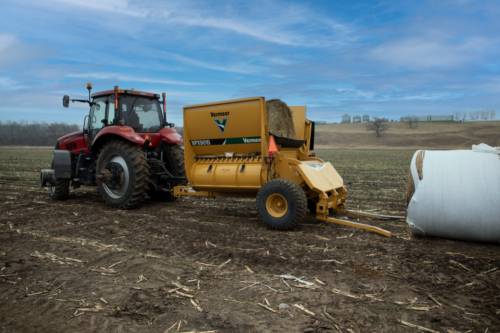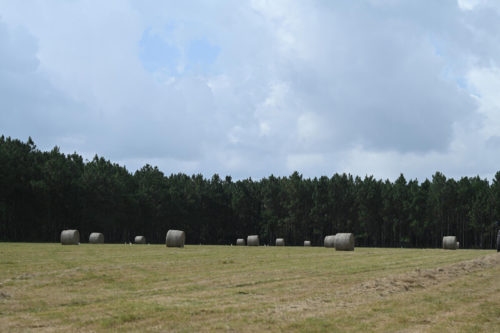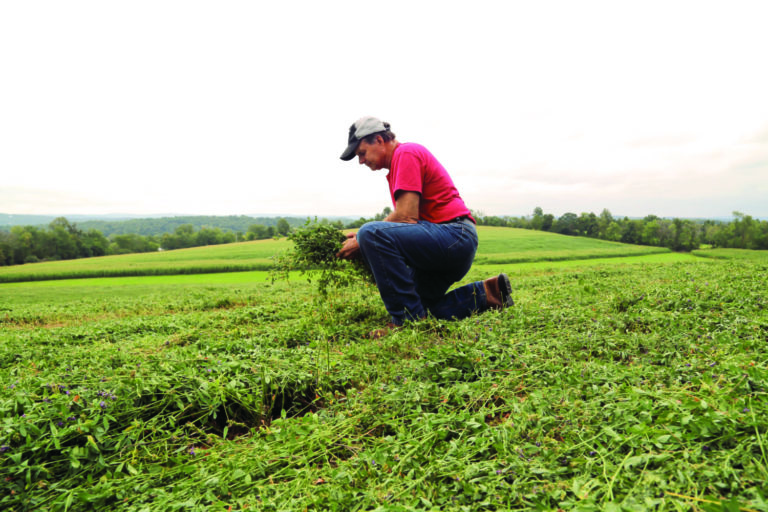
Don’t get caught by drought: tips to adapt or extend your forage crop
May 2021
Much of the U.S., especially the western half of the country, entered the 2021 growing season under drought conditions. You can help prevent a drought-driven hay shortage with attention to what you raise, how you raise it and how you feed it to livestock. Don’t wait to take action if you think your forage crop will come up short this season — assess your operation now while you can still make changes to your plan.
“We’re tight this year, inventory-wise. Ideally, you want to make adjustments as early as possible,” said Michigan State University Extension Forage Specialist Kim Cassida. “Anytime you’re trying to fix things in the middle of a crisis like a drought, that’s not the best way to go about it.”
Improve your existing forage crops.
Start by making sure your forage crop — whether a grass or legume — has the fertility it needs. Actively balancing soil and crop fertility can add cost but can potentially improve crop output and quality.
Start with soil testing. The main data you want to glean is soil pH. Whether you’re testing soil pH of existing perennial forage, or if you’re considering different options to help establish new forage stand, the data can tell you the macronutrients and micronutrients necessary to support your crop based on soil pH.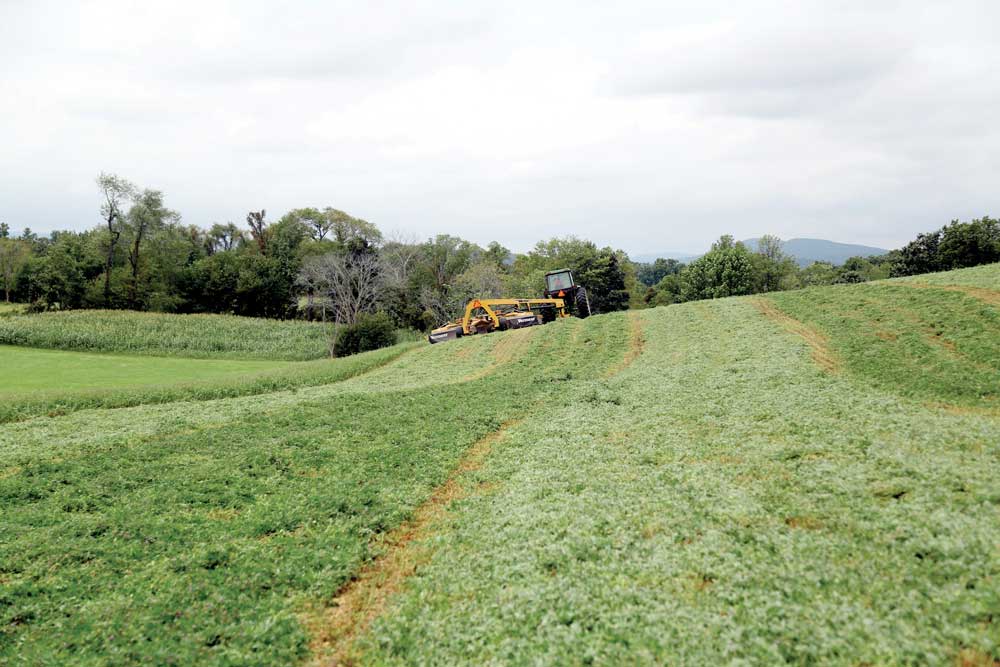
“Soil tests will give producers an idea of how much of a particular nutrient is already in the soil,” said Emily Meccage, Ph.D., co-owner and consultant with Field and Fodder Consulting, and former assistant professor at Montana State University. “It will help producers and their trusted agronomic advisors develop a fertilizer regimen.”
Providing essential moisture at critical crop growth junctures is another way to help prevent a hay shortage and boost forage crop quality. Scott Neal has found his Vermeer ZR5-1200 self-propelled baler helps him get his crop harvested and baled more quickly at each cutting with minimal compaction. That way, he can kickstart his alfalfa growth sooner to boost overall crop output.
“The combination of the ZR5-1200 and our ability to irrigate quickly during regrowth probably puts me two weeks ahead each cutting. That’s huge for us,” said Neal, a Buffalo, Wyoming, alfalfa producer. “If I can get two weeks ahead, my chances are so much greater to get a third cutting on a lot more fields. Everybody tries for a third cutting around here, but a lot of times, the crop doesn’t make it.”
At each cutting, make sure you’re hitting the sweet spot for crop height; a good rule of thumb for stubble height is around 3 inches, though that is more of a median number. Research in Wisconsin shows the number of cuttings has a lot to do with the optimal stubble height. If you expect three or fewer cuttings, it’s better to leave stubble shorter, as low as 1 inch, whereas if you plan on five or more cuttings, crop output rises with stubble taller than 3 inches left at each cutting. If quality is a higher priority than quantity, consider cutting the crop taller each time, as lower stem sections are higher in protein and have fewer leaves. Regardless of the height of your stubble, minimize any field activity that could prevent quick, early regrowth.
Change the forage crop you grow.
“Don’t remove a perennial stand to put in an annual forage crop,” Cassida said. “Plan ahead to ensure you have 6 – 8 weeks of growth before you have useful output. If you have wheat acres, you have a lot of time between harvest and when the weather turns cold, so you have a perfect window to put in a forage annual crop.”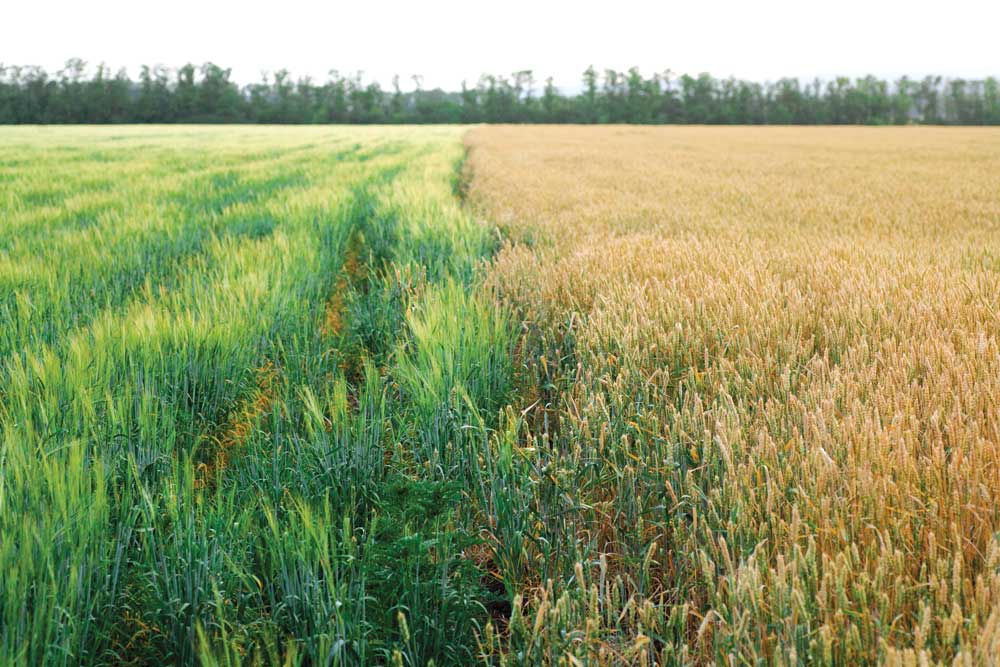
Cassida recommends checking with local forage agronomists to determine which annual crops will be best suited to your geography, weather, moisture levels, the animals you’re feeding and how you’re feeding them. Field peas and oats is a common forage annual combination in Cassida’s state of Michigan, for example, since they can be planted in cooler spring soils in time to yield a useful stand by early summer.
Adjust how you feed to help prevent a hay shortage.
There are also ways to adjust your forage feeding rotation and strategies to help prevent a hay shortage and take better advantage of crop and livestock nutrients. While it’s virtually impossible — and not usually advisable — to completely replace haying with stockpiling grass or rotational grazing, some standing forage crops and residue like corn stalks can help extend forage supplies.
Also consider baling alternative annual forage sources that can supplement your forage supplies when perennial crop yields are down. Keep an eye on your ration if feeding alternative forage sources to ensure you’re maintaining the right balance of dry matter, protein, starch and nutrient levels. Adding a “forage extender” like corn gluten or ethanol coproducts can help make sure you’re meeting your herd’s nutritional needs.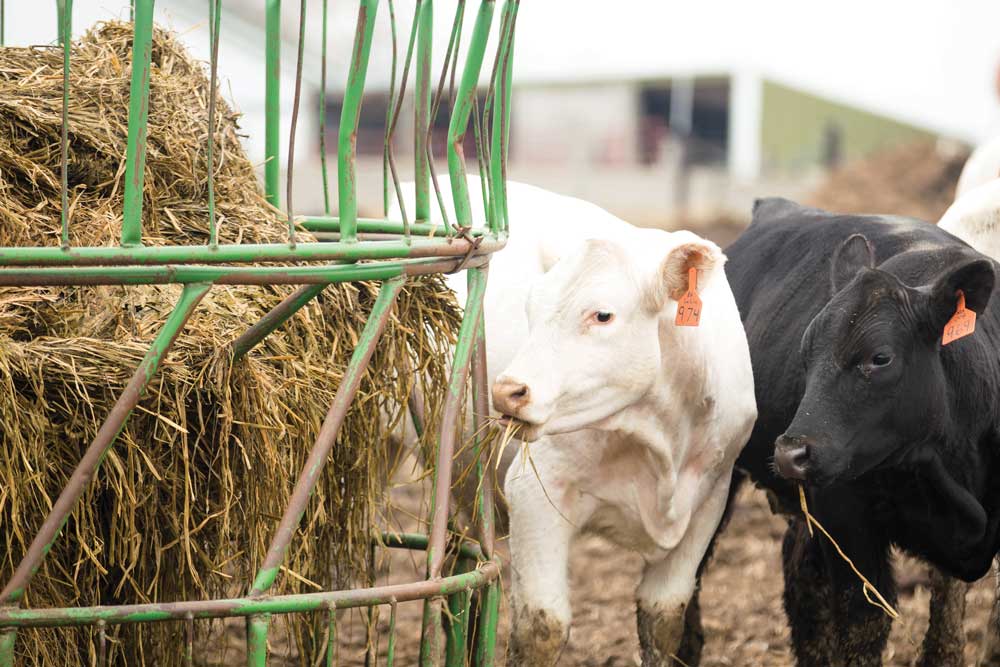
Finally, Cassida recommends looking at how you feed your forage crop. The lowest-labor systems — unrolling bales in a pasture, for example — often are the most wasteful. By limiting the time your herd has to feed, you’ll maximize the amount of feed consumed.
“You want to have enough animals stocked on a bale so they can eat it quickly and not mess it up. Create a plan that identifies the correct portions to feed your cattle, because you don’t want to put out more than what your cows will eat in one day. Otherwise, it turns into bedding,” Cassida said. “Make sure you’ve got enough animals to eat it quickly.”
One way to prevent waste and ensure your cattle have the right amount of feed is by processing your forage, whether feeding it alone or as part of a more diverse ration. Grinding or chopping hay with a hay processor or vertical feed mixer helps both complement other ration ingredients and minimize waste at the feed bunk. The right equipment depends on your ration and how you feed it. Here are some things to think about when considering adding a vertical feed mixer or hay processor to minimize hay waste.
Vermeer Corporation reserves the right to make changes in engineering, design and specifications; add improvements; or discontinue manufacturing at any time without notice or obligation.
Equipment shown is for illustrative purposes only and may display optional accessories or components specific to their global region.
Please contact your local Vermeer dealer for more information on machine specifications.
Vermeer and the Vermeer logo are trademarks of Vermeer Manufacturing Company in the U.S. and/or other countries.
© 2021 Vermeer Corporation. All Rights Reserved.

